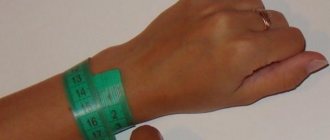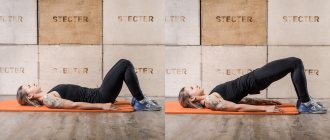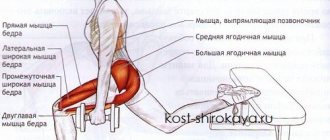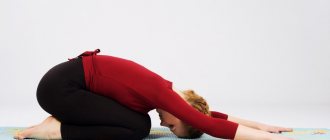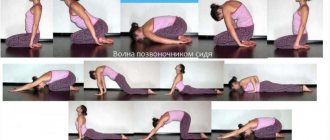A set of exercises for fingers
The main causes of pain in the joints of the fingers include overwork, illness or injury. If pain is felt in the joints of the fingers, appropriate measures must be taken immediately. First, it is better to consult a specialized doctor: a traumatologist, a neurologist or a surgeon. Regular finger training and palm exercises develop strength, improve joint mobility, and relieve pain.
- Exercise Fist
Straighten and stretch your fingers, feel the tension in your muscles and joints. There should be no pain. Start with a simple stretch: make a fist with your fingers and place your thumb on top of your other fingers. Hold for 30-60 seconds. Then unclench your fist and straighten your fingers, spreading them wide. Repeat at least 4 times for each hand.
- Exercise Finger stretching. Use this exercise to relieve pain and improve joint mobility
Place your hand, palm down, on a flat surface. Gently straighten your fingers, placing them on the surface, without forcing or straining the joints. Hold for 30-60 seconds, then relax, returning to the starting position. Repeat at least 4 times for each hand.
- Exercise Claws. This exercise develops finger mobility:
Place your hand in front of you with your palm facing you. Bend your fingers so that your fingertips rest on the base of your knuckles. The hand should look like a clawed paw. Hold for 30-60 seconds. Repeat at least 4 times for each hand.
- Exercise Grip. An exercise to develop your grip, helps you handle door handles and hold objects.
Take a soft ball and squeeze it as hard as you can. Hold for a few seconds, then release. Repeat 10-15 times for each hand. Perform this exercise 2-3 times a week, with an interval between them (at least 48 hours). Do not perform this exercise if your thumb joints are injured.
- Exercise Pinch
The exercise develops the muscles of the fingers. This helps with handling keys, opening packages, and gassing up the car. Pinch the soft ball between your thumb and one of your other fingers. Hold for 30-60 seconds. Repeat 10-15 times for each hand. Perform this exercise 2-3 times a week, with an interval between them (at least 48 hours). Do not perform this exercise if your thumb joints are injured.
- Exercise Finger Raising. The exercise develops joint mobility and finger flexibility.
Place your hand, palm down, on a flat surface. Take turns lifting your fingers and placing them back on the surface. You can lift all your fingers at once. Repeat 10-12 times for each hand.
- Exercise Thumb abduction. The exercise develops the muscles of the thumbs, helping to better cope with gripping and lifting things, such as cans and bottles.
Place your hand, palm down, on a flat surface. Use a rubber band to secure your palm and thumb together. Move your thumb to the side, overcoming the resistance of the elastic band. Hold for 30-60 seconds, relax. Repeat 10-15 times for each hand. Perform this exercise 2-3 times a week, with an interval between them (at least 48 hours).
- Exercise Thumb Flexion. The exercise develops the mobility of the thumbs.
Place your hand in front of you, palm up. Move your thumb to the side. Then bend your thumb toward your palm so that it touches the base of your little finger. Hold for 30-60 seconds, relax. Repeat at least 4 times for each hand.
- Exercise Thumb Touch. The exercise develops the mobility of the thumbs, helps you better cope with brushing your teeth with your cheek, eating with a fork and spoon, and writing with a pencil and pen.
Place your hand in front of you, wrist straight. Touch each finger with your thumb in turn, forming an "O" shape. Hold for 30-60 seconds, relax. Repeat at least 4 times for each hand.
- Exercise Thumb Stretching. Two stretching exercises for the thumbs.
Place your hand in front of you with your palm facing you. Bend your thumb towards your index finger. Hold for 30-60 seconds, relax. Repeat at least 4 times for each hand. Place your hand in front of you with your palm facing you. Pull your thumb over your palm, using the lowest knuckle. Hold for 30-60 seconds, relax. Repeat at least 4 times for each hand.
Why do you need to develop your fingers?
Over the past few months, I've been working hard on learning how to touch-type on a keyboard. Up to a certain point, typing training proceeds without any problems. For most people, this is a typing speed threshold of 300-400 beats per minute. But further development of speed can slow down very much or even stop if you do not engage in additional training of finger motor skills. Of course, if you just want to type and are not in a hurry, then you can just do the actual typing, type a lot of texts and the speed will gradually come on its own. However, with heavy loads on your hands and fingers, you may begin to experience problems with tendons and muscles, pain in your hands, and your wrists or forearms may begin to ache. There is even such a disease - carpal tunnel syndrome, which is considered an occupational disease of typists and modern office workers.
All this can be avoided if you train your fingers and hands at the same time. And this will help you achieve the desired typing speed much faster and easier, your development will be even. When I experienced the first signs of fatigue in my fingers and wrists, I thought about it and began looking for information about additional exercises for my fingers.
Greg Irwin and Finger Fitness
There is a person who came up with a whole trend - “fitness for fingers.” He turned finger exercises into an art. And he performs peculiar “performances” exclusively with his fingers of both hands. Watch this video, please, you probably haven't seen anything like this before.
He developed a set of exercises for guitarists, wrote books and instructional videos. I think it's also good for developing your fingers. You can easily find all these materials online if you wish.
Training with an expander
You need to squeeze the circular expander (“donut”) 15-20 times, three to four approaches per session.
To begin with, you can squeeze the projectile with your whole hand; when such a load is not enough, you can squeeze it with two fingers.
Completion time: minimum 5-6 minutes. The stronger the rubber from which the expander is made, the greater the load on the muscles.
Anatomy of the wrist muscles
The anatomy of the wrist muscles is quite complex and interesting. And the work to strengthen them is very labor-intensive.
In short, our brushes consist of:
- lumbrical muscles;
- palmar and dorsal interosseous muscles;
- muscle groups of the thumb;
- muscle groups of the small finger.
Carpal muscles
The muscles of the hands are directly connected to the muscles of the forearm, so exercises aimed at strengthening the first muscle group also work well on the second.
Forearm muscles
From sports games
These exercises are very popular among those who want to quickly pump up the phalanges of their hands.
These include:
- Falling on the wall. Standing parallel to the wall at a distance of about a meter, you need to fall on it, taking the “lying down” position, only in the vertical plane.
- Squeezing the tennis ball without touching the center of your palm.
- Rolling sand-weighted ping pong balls between your fingers.
To achieve visible results, these exercises can be performed daily because they are quite simple.
Previously, we told you how to remove your butt.
Special gripping techniques in power sports
These finger exercises are the property of the “old” Soviet school of athletes.
The main ones:
- The use of thickened bars on the barbell, due to which the phalanges receive increased load.
- Improvised weights instead of weights. You can use barrels or sandbags. You have to hold the bags with your entire hand, which brings a much greater effect than a dumbbell press. Starting position: feet shoulder-width apart. You need to press the bag from behind your head - in the French way.
To begin with, it is better not to lift heavy bags to avoid injury.
What to do to prevent pain in your hands and fingers
And now, every day, in addition to directly typing texts, I try to do a set of exercises that I found on the clavogon forum (, ) from a user known under the nickname Pereborych. He recorded a video where he clearly showed how he does it. The video contains about a dozen effective exercises.
I wrote them down in text form and supplemented them with my comments. Initially, I did this for myself, because I don’t like receiving information in video format, because reading the text is much faster and easier for me. And since there are quite a lot of these exercises, I didn’t remember them right away and decided to write them down. But it turns out that this is a very pressing problem for many people, they often ask about it, and I decided to publish this article, adding other information on the topic.
Developing grip strength
Grip strength indirectly affects not only the endurance and power of all arm muscles, but also protects the hand and forearm from injuries.
To develop grip strength, you need to train your hands using an expander, special elastic bands that are placed on your fingers to develop pinch strength.
You can also exercise with ordinary dumbbells, but hold them not in the palm of your hand, but with your phalanges.
Grip strength develops very well when playing sports and some types of extreme hobbies.
These include:
- rock climbing;
- hockey;
- rope climbing;
- tennis;
- workout;
- martial arts.
The most popular methods of pumping phalanges will be discussed below.
Previously, we told you how to pump up your breasts.
Children's gymnastics
It is very important for children to develop their hands. For those under five years of age, modeling from plasticine, playing with balls, and putting together mosaics helps a lot. But those who have already gone to school begin to experience a lot of stress on their hands while learning the basics of writing. Therefore, it is very important to teach your child to pay attention to his hands every day.
- "Cockerel" . This activity is very simple: clasp your palms. Press your left hand onto the back of your other. Extend your palm, as if imitating the comb of a cockerel.
- "Path" . Place your right thumb on your left thumb to create two steps. Place all your fingers on top of each other one by one - you will get a walk along the path.
- "Centipede" . Place your fingers on the edge of the table, move them, running to the other edge.
- "Elephant" . The thumb, little finger, ring finger and index finger will be the elephant's feet. Retract your middle finger like a trunk. Walk slowly, stepping with each foot.
- "Lanterns" . Straighten your palm, first clenching your fist, then spread your fingers, begin to squeeze and unclench them.
- "Dough" . Everything here is extremely simple: you just need to imitate the process of kneading the dough. The brushes are designed very well.



